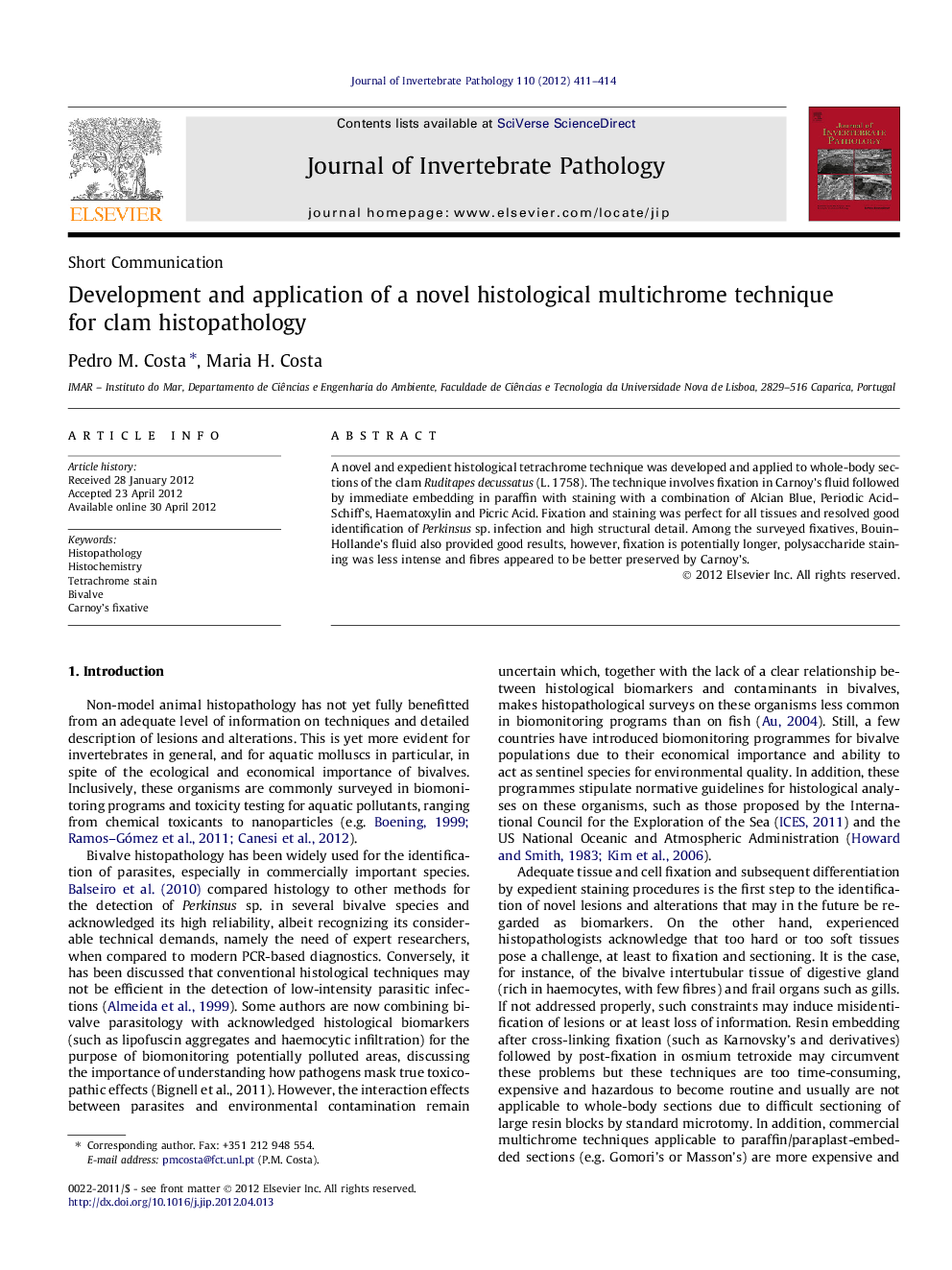| Article ID | Journal | Published Year | Pages | File Type |
|---|---|---|---|---|
| 6389687 | Journal of Invertebrate Pathology | 2012 | 4 Pages |
A novel and expedient histological tetrachrome technique was developed and applied to whole-body sections of the clam Ruditapes decussatus (L. 1758). The technique involves fixation in Carnoy's fluid followed by immediate embedding in paraffin with staining with a combination of Alcian Blue, Periodic Acid-Schiff's, Haematoxylin and Picric Acid. Fixation and staining was perfect for all tissues and resolved good identification of Perkinsus sp. infection and high structural detail. Among the surveyed fixatives, Bouin-Hollande's fluid also provided good results, however, fixation is potentially longer, polysaccharide staining was less intense and fibres appeared to be better preserved by Carnoy's.
Graphical abstractDownload full-size imageHighlights⺠A novel efficient histological technique is proposed for clam histopathology on whole-soft body sections. ⺠The technique combines fixation in Carnoy's fluid and a tetrachrome stain in paraffin sections. ⺠The procedure provides high quality and high contrast images for general-purpose histopathology.
